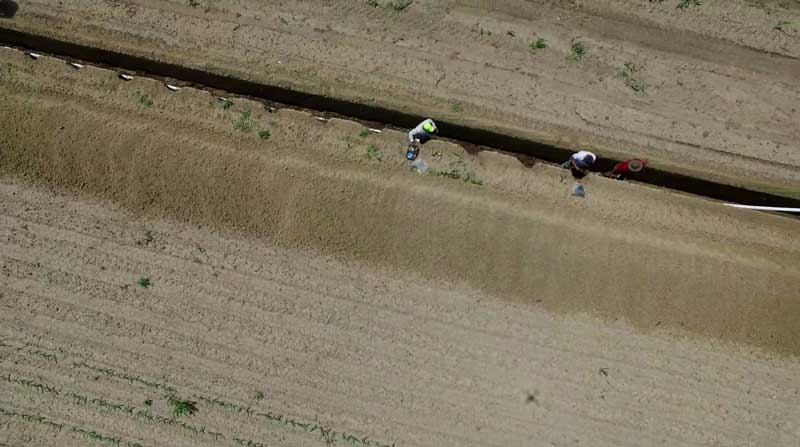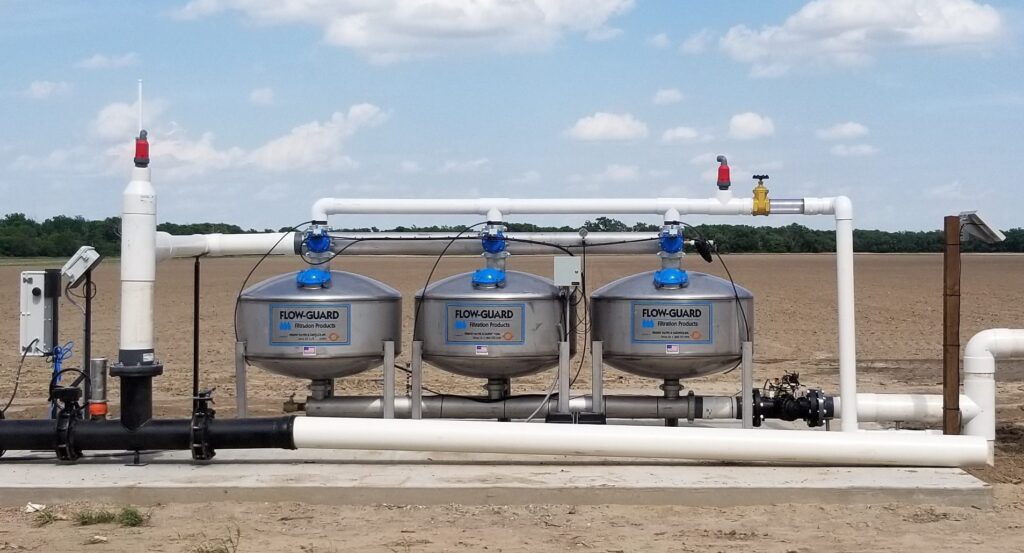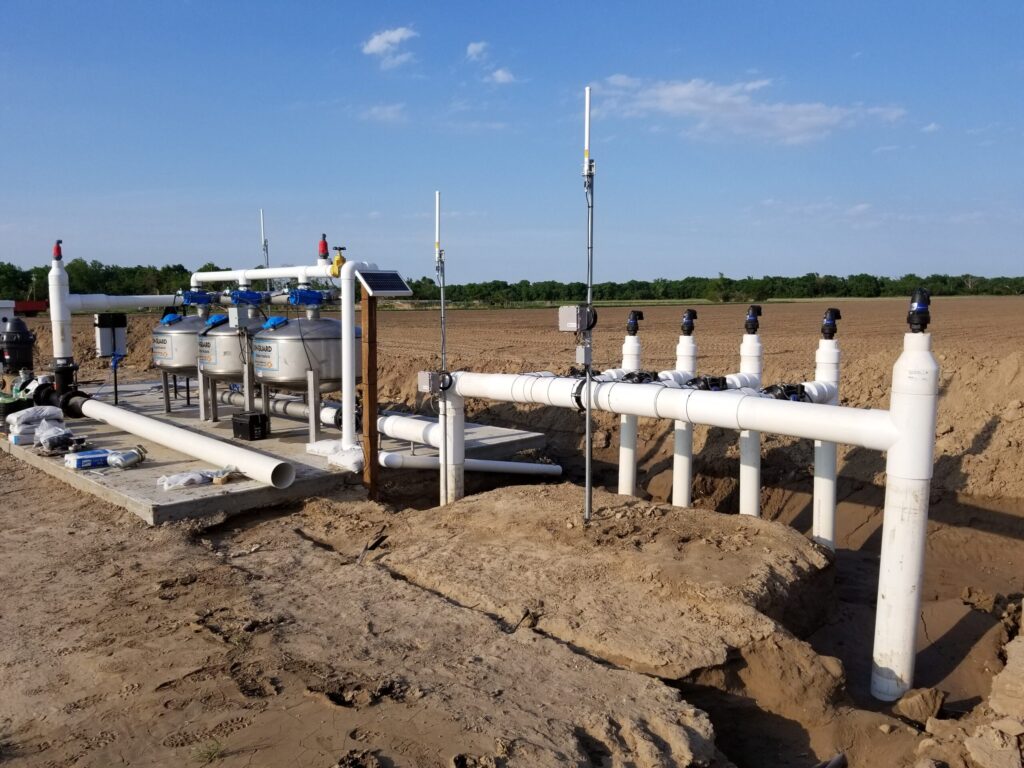Breaking Down Subsurface Drip Irrigation Depth: How Deep Is Deep Enough?
Breaking Down Subsurface Drip Irrigation Depth: How Deep Is Deep Enough?
Subsurface drip irrigation (SDI) is one of the most efficient ways to water your crops, but its success hinges on one critical factor: depth. Proper placement of your drip lines is the hidden secret to unlocking the full potential of your system, ensuring every drop of water is used effectively. Many farmers ask, “How deep should my drip lines really go?” The truth is, there is no single answer. The ideal depth depends on a unique combination of your crops, soil type, and local climate.
This guide will break down the science behind subsurface drip irrigation depth. We will explore key field conditions and provide expert insights to help you make smarter, more informed decisions for your farm, ensuring your irrigation system is built on a solid foundation.
The Fundamentals of Drip Line Depth
What “Depth” Really Means
In SDI, “depth” refers to the vertical placement of the drip emitters in the soil relative to the plant’s root zone. The goal is to deliver water directly where the roots can access it, minimizing waste from evaporation and runoff. The right depth ensures water and nutrients are available to the plant right when it needs them.
Capillary Action Explained
Once water is released from the emitter, it doesn’t just sink. Thanks to capillary action, water moves both downward due to gravity and outward and upward into the surrounding soil. This creates a wetted zone around the drip line. Understanding how far water will travel in your specific soil type is crucial for determining the correct spacing and depth of your lines.
Why Depth Differs by Farm
Every farm presents a unique set of variables. The ideal drip line depth is a carefully calculated balance between three main factors:
- Soil Type: Sandy soils drain quickly, while clay soils hold water longer.
- Crop Choice: Different plants have different root structures.
- Climate: Evaporation rates and rainfall patterns influence how deep lines should be placed.

How Crops Influence Depth Placement
Shallow Root Systems
Crops with shallow roots, such as many vegetables (lettuce, spinach) and strawberries, require irrigation closer to the surface. For these plants, drip lines are often placed at a depth of 4 to 6 inches. This placement ensures water is immediately available to their less-developed root systems.
Medium Root Systems
Field crops like corn, cotton, and soybeans have more extensive root systems that reach deeper into the soil. For these crops, a moderate depth of 8 to 12 inches is typically effective. This encourages roots to grow downward, creating a stronger, more resilient plant.
Deep Root Systems
Perennial crops like orchards (almonds, walnuts), vineyards, and alfalfa have deep, established root systems. To support their long-term growth, SDI lines should be placed much deeper, often between 12 and 24 inches. This placement provides a stable, long-lasting water source that promotes deep root development.
Soil Characteristics and Water Distribution
Sandy Soil Challenges
Sandy soils have large particles and drain very quickly. Water tends to move straight down with limited lateral spread. To compensate, drip lines in sandy soil may need to be placed closer together or at a slightly shallower depth to ensure the wetted zone reaches the plant’s roots before draining away.
Clay Soil Behavior
Clay soils consist of fine particles that absorb water slowly but hold it for a long time. Water in clay spreads wider laterally than it moves downward. This characteristic often allows for shallower placement and wider spacing between drip lines, as the capillary action effectively distributes moisture across a larger area.
Loam’s Flexibility
Loam soil, a balanced mixture of sand, silt, and clay, is often considered ideal for agriculture and SDI system. It offers good drainage while retaining adequate moisture. This flexibility allows for a wider range of effective depths, making installation less complicated than in purely sandy or clay soils.
Climate and Environmental Factors
Hot, Dry Regions
In arid or semi-arid climates, surface evaporation is a major concern. Placing drip lines deeper—typically 12 inches or more—helps protect water from evaporating before the plants can use it. This strategy conserves a significant amount of water over the course of a growing season.
Humid and Rain-Prone Areas
In regions with high humidity and frequent rainfall, the primary goal is to avoid waterlogging the root zone. Shallower placement can be advantageous, as it allows soil to dry out more quickly between irrigation cycles and rain events, reducing the risk of root rot and other moisture-related diseases.
Seasonal Shifts
For areas with dramatic seasonal changes, like freeze-thaw cycles in winter or extreme summer heat, depth adjustments are critical. Deeper placement can protect the irrigation system from damage caused by freezing ground or farm equipment.

Shallow vs. Deep: Pros and Cons
Shallow Lines
Pros: Shallow lines (4-8 inches) are easier and cheaper to install and maintain. They provide a quick response for young plants.
Cons: They are more susceptible to damage from farm machinery and can encourage weed growth near the surface.
Deep Lines
Pros: Deeply placed lines (12+ inches) have a longer lifespan, are protected from surface activity, and minimize evaporation.
Cons: Installation is more complex and costly. Maintenance and repairs can be difficult and disruptive.
Finding the Sweet Spot
For many farming operations, the ideal solution lies somewhere in the middle. A moderate depth of 8 to 12 inches often provides a good balance, offering protection for the system while keeping it accessible enough for effective management.
Installation Best Practices for Correct Depth
Field Survey and Mapping
Before you begin, conduct a thorough field survey. Use GPS and elevation mapping tools to analyze the terrain. This data helps you plan the layout and ensures a consistent installation depth, which is critical for uniform water distribution.
Precision Machinery
Use specialized trenching and installation equipment designed for SDI. These machines can maintain a consistent depth across uneven fields, which is nearly impossible to achieve with standard farm equipment. Precision installation prevents low spots where water might pool and high spots that remain too dry.
Testing Before Planting
After subsurface irrigation system installation, run a test cycle to check water distribution. Use soil moisture probes or simply dig a few test pits to see how the water is moving through the soil profile. This allows you to make any necessary adjustments before your crops are in the ground.
Mistakes Farmers Often Make
Copy-Paste Installation
One of the biggest mistakes is duplicating an installation from a neighboring farm without considering your own unique conditions. What works for one field may not work for another, even if they are close by.
Neglecting Soil Variability
Many fields have multiple soil types. Failing to account for this variability can lead to uneven watering. Your system design should be adapted to accommodate these different zones, perhaps by adjusting emitter spacing or flow rates.
Ignoring Crop Stages
A plant’s water needs and root depth change as it grows. A system designed only for a mature crop might not be effective for seedlings. Plan your irrigation strategy to support the crop throughout its entire life cycle.
Monitoring Depth Performance Over Time
Using Soil Moisture Sensors
Placing soil moisture sensors at various depths provides real-time data on water movement. This information allows you to see exactly where your water is going and make precise adjustments to your irrigation schedule.
Crop Feedback
Your plants are excellent indicators of system performance. Watch for signs of stress, such as wilting or discoloration. These signals can indicate that water is not reaching the root zone effectively.
Continuous Improvement
Use the data from your sensors and observations from the field to fine-tune your system. Each season offers an opportunity to improve efficiency, conserve water, and increase your yields.

Western Irrigation: Helping Farmers Get Depth Right
Experience Meets Innovation
Since 1985, Western Irrigation has combined decades of on-the-ground experience with the latest industry technology. Our authorized dealers, designers, and installers deliver superior service and supplies at every stage of the process.
Custom Field Evaluations
When you work with us, our expert staff will come and evaluate your property. Using GPS tracking, we map out the elevation and terrain to design a system that accounts for your specific crops, soil, and climate, ensuring optimal depth placement.
Support Beyond Installation
Our commitment to you doesn’t end after installation of SDI. Western Irrigation believes in creating long-lasting relationships. We provide training and prompt customer service to help you manage your system effectively and maximize its lifespan.
Your Next Step Toward Efficient Irrigation
Ultimately, correct drip line depth is a game-changer for the success of a subsurface drip irrigation system. It’s the difference between an investment that pays dividends and one that falls short. Remember that every farm is unique; the right depth isn’t a standard measurement but a strategic decision based on your specific conditions.
If you’re ready to optimize your water use and boost your yields, the next step is to consult with an expert. Contact Western Irrigation today for a tailored solution that gets your SDI depth exactly right.
